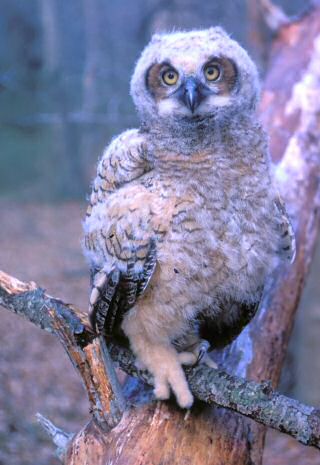|
Trail Guides
|
Turkey Point
|
3
 
|
Turkey Point Road, Dividing Creek, NJ 08315
Phone: (856) 825-9952
www.natlands.org
Natural Lands Trust
Take Newport Landing Rd. back
out past Fortescue Rd. and take the first Right after Fortescue Rd. onto CR 732/Methodist Rd.
At the stop sign, continue right onto CR 553.
Turn Right onto CR 664/Turkey Point Rd. Turn Right onto Maple St. and follow to end. Map
The abundance of raptors and waterfowl make winter the best time to visit Turkey Point. Listen at dusk for a chorus of Great Horned Owl while staying alert for the ghostly shadow of the diurnal Short-eared Owl hunting over the
meadow. Check the creeks and you may be lucky enough to see all three species of mergansers; Red-necked, Common and Hooded. Look and
listen for chickadees, Ruby-crowned Kinglet, American Robin, and nuthatches along the
wooded edge. Marsh Wren and sparrows harvest seeds in the tall grass along the road.
Spring is wonderful at Turkey Point. Black-crowned Night-Heron roost in the bayberry next to the raised platform. Watch for them to emerge from their roost in the early evening. The marshes come alive with Clapper and Virginia Rails as well as herons and shorebirds. Waves of migrant songbirds are common at Turkey Point as it serves as a point of first landfall for tired birds crossing the Delaware Bay. Flights are often best following the arrival of a warm front from the south.
Birds are still active in the area, but
biting insects can make Turkey Point very unpleasant. Look for Salt Marsh Sharp-tailed and Seaside Sparrows, as well as Indigo Bunting, Red-winged Blackbird, and Prairie Warbler, all of which are known to breed here. Listen for the chant of the Willet calling his name I’m-a-willet, I’m-a-willet, I’m-a-willet over and over all
summer long.
Mid-August to mid-September is the best time to see migrating shorebirds and warblers, especially following a cold front.
| |
 |
| Great Horned Owl owlet | Paul Taylor |
| |
Turkey Point is an example of a pristine salt marsh, stretching five miles toward Egg Island Point and the Delaware Bay. The wooded hummocks and forest edges supply
raptors with multiple perches from which to scan the marsh for prey. Thousands of Snow Geese feed and roost in the marsh in winter and the din they raise is something to be heard. In the spring, the upland edges along Turkey Point Rd. are alive with migrating warblers while the marsh teems with wading birds and shorebirds like rails, Willet, Greater and Lesser Yellowlegs, and Glossy Ibis. Turkey Point was the site of the DEP, Division of Fish and Wildlife’s very successful Bald Eagle hacking project. Thus, Bald Eagles are easy to spot here year round and several pairs nest in this area. Turkey Point also has a large population of breeding Great Horned Owls.
There are large flocks of Snow Geese in the winter. When they billow up in large, noisy clouds, it’s usually a good indication a Bald Eagle is nearby.
There are three well-marked trails located along Turkey Point Rd. and an observation platform and foot bridge at the end of the road. A paddling trail beginning at the boat launch at the end of Turkey Point Road leads paddlers on a 10-mile exploration of local creeks. The trail intersects with a series of four others, creating longer and shorter options. Visit www.fishandwildlife.com for maps and information.
Be sure not to miss looking at the small fresh water pond on the right side of Turkey Point Road before you get to the end of the road. This small pond warms up in early morning and in winter many birds and wildlife come for a drink!
|
|
|